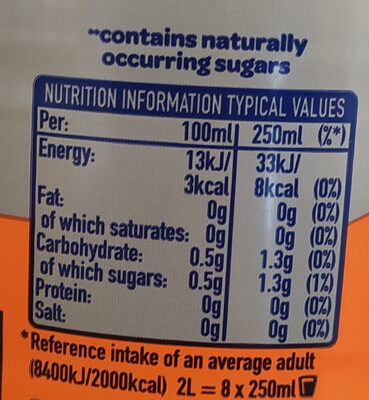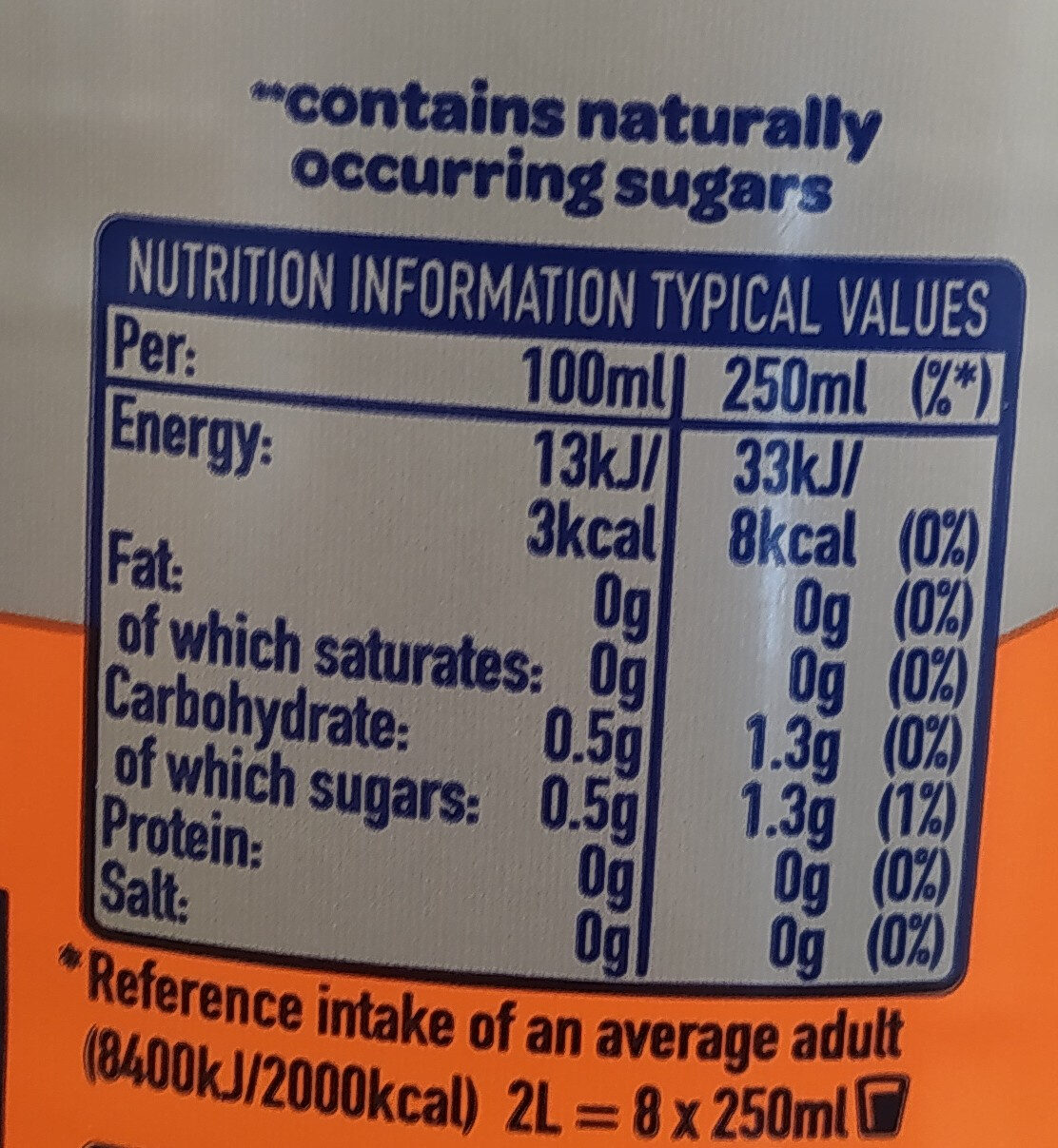Fanta Orange Zero 2Ltr
This product page is not complete. You can help to complete it by editing it and adding more data from the photos we have, or by taking more photos using the app for Android or iPhone/iPad. Thank you!
×
Barra-kodea: 5449000120984 (EAN / EAN-13)
Kopurua: 2Ltr
Ontziratzea: en:Pet-bottle, en:Pet-lid
Markak: Fanta, 7up, Fanta-light
Kategoriak: en:Plant-based foods and beverages, en:Beverages, en:Plant-based beverages, en:Carbonated drinks, en:Fruit-based beverages, en:Artificially sweetened beverages, en:Sodas, en:Fruit sodas, en:Orange soft drinks, en:Sweetened beverages
Etiketak, ziurtagiriak, sariak: en:Contains a source of phenylalanine
Saltzen diren herrialdeak: Frantzia, Espainia, Erresuma Batua
Matching with your preferences
Ingurumena
Ontziratzea
Transportation
Report a problem
Datuen iturria
Product added on by openfoodfacts-contributors
Last edit of product page on by mylabelcontributors.
Produktuaren orria -gatik editatua aarongarcia, doublah, foodless, inf, kiliweb, musarana, niai, packbot, ricplan, swipe-studio, teolemon.









